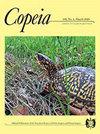书评
IF 2.6
Q2 Agricultural and Biological Sciences
引用次数: 0
摘要
当大卫·伯内特和我在六年前创立分子病理学时,部分原因是相信(我确信这是正确的)病理学家,无论他们从事血液学、肿瘤病理学、微生物学还是其他领域的工作,在分子术语上讲的都是同一种语言。这本书的出版强调了这个事实,虽然我的兴趣,当然,主要是在淋巴瘤病理,这本书中有很多章节是我感兴趣的,不仅仅是在技术方面。例如,对爱泼斯坦-巴尔病毒感兴趣的人也可以阅读有关乳头状瘤病毒,人类疱疹病毒8,巨细胞病毒,当然还有各种白血病和淋巴瘤的易位检测等章节。然而,人们的兴趣并不止于此,因为对我们大多数人来说,端粒酶和微卫星不稳定性无疑是根本的兴趣所在。此外,例如,在我们医院,我们正在进行血栓性疾病和血色素中毒的分子方面的研究。这些评论在个人的基础上强调了本卷中看似高度专业化的贡献之间的广泛重叠。在书的开头有三个重要的章节DNA和RNA提取从蜡埋或冷冻组织,这应该由所有在这个领域阅读。此外,随着世界范围内分枝杆菌疾病的频率增加,在福尔马林固定、蜡埋组织切片中检测分枝杆菌和形成分枝杆菌的切片肯定是未来的趋势,例如,用ZiehiNeeisen技术对切片进行染色肯定会成为过去的技术。因此,尽管在对本书内容的初步浏览中,似乎任何一个人都可能发现,比如说,只有三到四章相关或感兴趣,但我不觉得情况是这样的,我建议任何病理学家(大写P!)深入研究这本书,因为他们肯定会从中受益。本文章由计算机程序翻译,如有差异,请以英文原文为准。
BOOK REVIEWS
When David Burnett and I founded Molecular Pathology six years ago, it was partly in the belief (which I am sure is correct) that pathologists, whether they work in haematology, oncological pathology, microbiology, or whatever, speak the same language in molecular terms. The publication of this book underlines that fact, and although my interest is, of course, largely in lymphoma pathology, there are many chapters in this publication that are of interest to me, not only on the technical side. For example, those with an interest in Epstein-Barr virus would also benefit from reading the sections on papilloma virus, human herpesvirus 8, cytomegalovirus, and, of course, the detection of translocations and so on in various leukaemias and lymphomas. However, interest does not stop at this level because surely to most of us telomerases and microsatellite instability are of fundamental interest. Also, for example, in our hospital we have studies under way on molecular aspects of thrombotic disorders and haemochromotosis. These comments serve to underline, on a somewhat personalised basis, the broad overlap between what would appear to be highly specialised contributions in this volume. At the beginning of the book there are three essential chapters on DNA and RNA extraction from wax embedded or frozen tissue, which should be read by all in this field. Furthermore, with the increase in frequency of mycobacterial disease worldwide, the section on the detection and speciation of mycobacteria in formalin fixed, wax embedded tissue sections is surely a taste of the future when—for example, staining of sections with the ZiehiNeeisen technique will surely become a technique of the past. Thus, although on initial scan of the contents of this book, it would appear to be the case that any one individual might find, say, only three or four chapters of relevance or interest, I do not feel that this is the case and I would recommend any pathologist (with a capital P!) to dip into this book because they are sure to benefit from it.
求助全文
通过发布文献求助,成功后即可免费获取论文全文。
去求助
来源期刊

Copeia
生物-动物学
CiteScore
2.10
自引率
0.00%
发文量
0
审稿时长
6-12 weeks
期刊介绍:
Founded in 1913, Copeia is a highly respected international journal dedicated to the publication of high quality, original research papers on the behavior, conservation, ecology, genetics, morphology, evolution, physiology, systematics and taxonomy of extant and extinct fishes, amphibians, and reptiles. Copeia is published electronically and is available through BioOne. Articles are published online first, and print issues appear four times per year. In addition to research articles, Copeia publishes invited review papers, book reviews, and compiles virtual issues on topics of interest drawn from papers previously published in the journal.
 求助内容:
求助内容: 应助结果提醒方式:
应助结果提醒方式:


